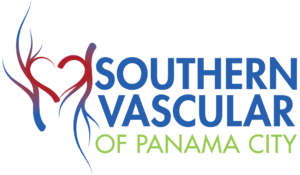Peripheral Arterial Disease – Aneurysms
Click to View Treatments
Peripheral Arterial Disease – Aneurysms
Peripheral Arterial Disease (PAD) happens when there is a narrowing of the blood vessels outside of your heart.
The cause of PAD is atherosclerosis. This happens when plaque builds up on the walls of the arteries that supply blood to the arms and legs. Plaque is a substance made up of fat and cholesterol. It causes the arteries to narrow or become blocked. This can reduce or stop blood flow, usually to the legs If severe enough, blocked blood flow can cause tissue death and can sometimes lead to amputation of the foot or leg.
An aneurysm is a bulge or “ballooning” in the wall of an artery. Arteries are blood vessels that carry oxygen-rich blood from the heart to other parts of the body. If an aneurysm grows large, it can burst and cause dangerous bleeding or even death.
Most aneurysms occur in the aorta, the main artery that runs from the heart through the chest and abdomen. Aneurysms also can happen in arteries in the brain, heart and other parts of the body. IF an aneurysm in the brain bursts, it causes a stroke.Aneurysms can develop and become large before causing any symptoms. Often doctors can stop aneurysms from bursting if they find an dtreat them early. They use imaging tests to find aneurysms. Often aneurysms are found by chance during tests done for other reasons. Medicines and surgery are the two main treatments for aneurysms.
Causes
It is not clear exactly what causes aneurysms. Some aneurysms are present at birth (congenital). Defects in some of the parts of the artery wall may be responsible.
Common locations for aneurysms include:
- The major artery from the heart (the aorta)
- The brain (cerebral aneurysm)
- In the leg behind the knee (popliteal artery aneurysm)
- Intestine (mesenteric artery aneurysm)
- An artery in the spleen (splenic artery aneurysm)
High blood pressure, high cholesterol, and cigarette smoking may raise your risk of certain types of aneurysms. High blood pressure is thought to play a role in abdominal aortic aneurysms. Atherosclerotic disease (cholesterol buildup in arteries) may also lead to the formation of some aneurysms.
Pregnancy is often linked to the formation and rupture of splenic artery aneurysms.
Symptoms
The symptoms depend on the location of the aneurysm. If the aneurysm occurs near the body’s surface, pain and swelling with a throbbing mass if often seen.
Aneurysms within the body or brain often cause no symptoms.If an aneurysm ruptures, pain, low blood pressure, a rapid heart rate, and lightheadedness may occur.
The risk of death after a rupture is high.
